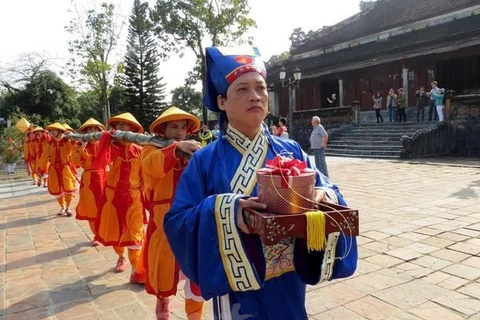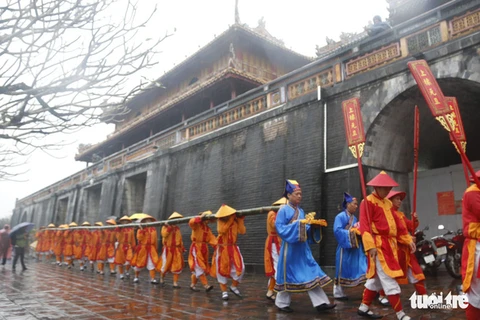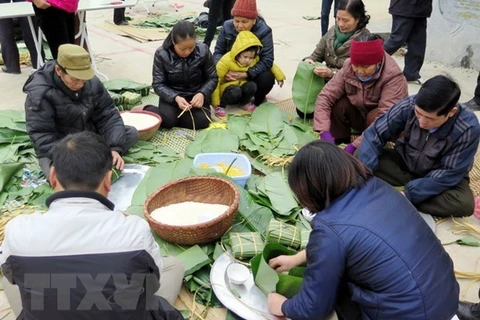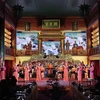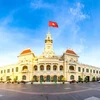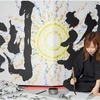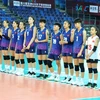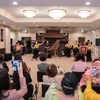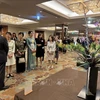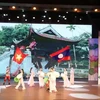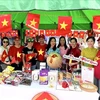Hanoi (VNA) - Vietnamese people in the old days put up tall bamboo poles with red garment strips hanging from them during Tet, believing that poles prevented ghosts and monsters from entering the community during the holiday. The tradition of raising the neu (or Tet) pole remains alive today in many villages and homes around the country.
Vietnamese people erect a Neu tree in front of their house to show off their land holdings and mark the border of their house. The bamboo pole was stripped of its leaves, except for a tuft at the top.
The decoration on the Neu trees varies between regions and periods. On the top of the bamboo tree, they often hang a snatch of pineapple leaves, chicken feathers and a circle of New Year cards made of bamboo and do (poonah) paper. According to cultural researchers, the circle of bamboo cards symbolizes happiness and chicken feathers represent holy birds with powers that can help the family.
The pole is also believed to ward off ghosts and demons from entering the community during Tet. It also seeks to show the way to ancestors who want to return home for the Lunar New Year holiday.
As legend goes, the Tet pole erecting tradition is originated from the Buddhism. Legend has it that long time ago, devils occupied the land of humans. Seeing humans’ suffering, the Buddha helped them fight the devil. With his power, the Buddha drove away the devils. The devils, having been expelled to the sea, asked for the Buddha’s mercy so that they can come back to the mainland to visit their ancestors’ grave for a few days in a year. The Buddha allowed them to comeback during the Lunar New Year.
In turn, the Buddha taught that in front of each house, high bamboo pole with a red piece of garment, chime and gongs should be erected during the Lunar New Year Festival to signal the devils that the land is belong to humans. The higher the bamboo tree is, the further the devils would stay away. Besides, the Buddha also told humans to draw an arrow pointing to the East side and sprinkle limestone flour on the doorstep to prevent the devils from entering the house.
The Northern people of Vietnam erected the pole in Lunar December 23rd since in the early morning of this day, the Kitchen Genie were left for the meeting in the heaven. Without these genie, the devils may devastate the folk. Thus, the Tet pole was erected until Lunar January 7th for driving the devils.
The pole will be taken down on the seventh day of the first lunar month to mark the end of the holiday. The Tet pole image has long been considered the most solemn symbol of Vietnamese Lunar New Year. It connects to a profoundly humane legend. The Tet pole erecting in the springtime is for the good hope of the coming year. The Tet pole under the sunshine expresses the awakening spring power in the hearts the Vietnamese. Those are nice significances transformed by Vietnamese ancients to the young generations. For this reason, at many Vietnamese villages in the days before Tet, many families set up the Tet pole in front of the village temple in the witness of the villagers. Many Hue culture address have enhanced this traditional cultural beauty by carrying out the Tet pole erecting formally.
The Tet pole erecting is a long-standing tradition of Vietnamese people. In the first days of the year, this ceremony brings about the animated atmosphere. It is not popular not only in hue but nationwide until now./.

